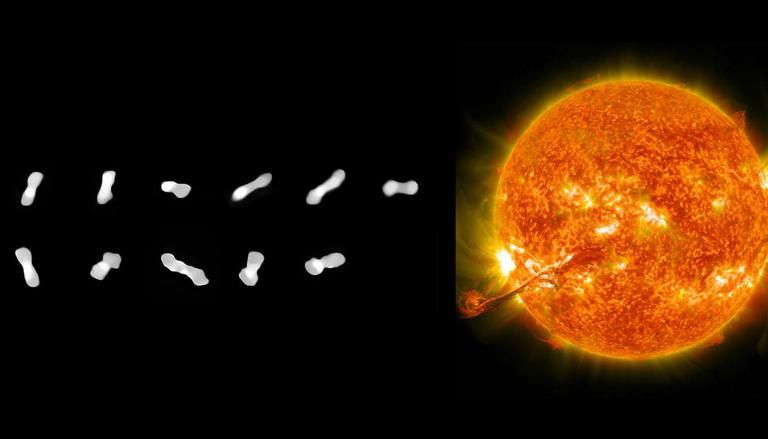At the European Observatory of the South, astronomers led to the very large telescope to take the most detailed images of a particular asteroid called Kleopatra. The asteroid is shaped like a dog bone and is big enough at 270 kilometers. To put its pressure in perspective, 270 kilometers are about half the length of the English chain.
Kleopatra orbit The sun between the orbits of March and Jupiter in the asteroid belt of our solar system. It is also known as “dog-bone asteroid” since it was discovered via radar observations two decades ago. It receives this name because the asteroid has two thicker ends connected by a thick neck. Another interesting fact Kleopatra is that he has a pair of orbit satellites around Alexhelios and Cleoselene.
In order to learn more about single asteroid, astronomers used images taken in 2017 and 2019 using the SPHERE instrument, which is part of the ESO VLT. The rotation of the asteroid has allowed astronomers to see it from different angles and the data has been used to create the most accurate 3D renders of Kleopatra so far. The asteroid was known to have its two moons in orbit around, but a second study showed the moons enlightened where past data predicted them to be.
Discover exactly where the two orbit moles are critical, the astronomer Miroslav Broz “, saying that if the orbits of the moons are false, other critical aspects on the asteroid could be false too, including its mass. In the new study, astronomers were able to obtain accurate data on how the severity of the asteroid affects the movement of these moons and discovers their correct orbits.
With more precise data on the complicated orbits of the two moons, researchers have been able to recalculate the mass of asteroid and have found that 35% less than past estimates. The team was also able to calculate new values for the density of the asteroid, noting that it is less than half of the lower iron density than that of the previous estimates. This suggests a porous structure that means that the asteroid can be a big pile of rubble and probably formed as a result of a massive impact.

